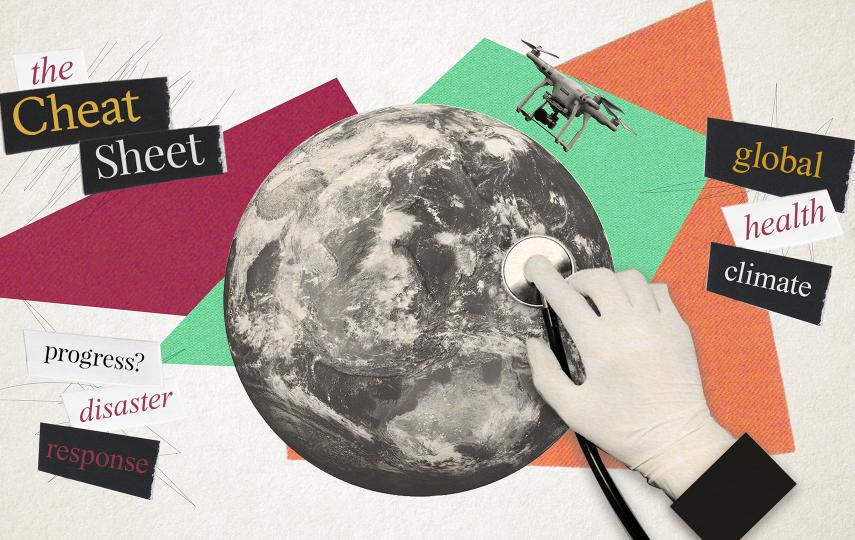There’s reason for both optimism and deep concern on World Polio Day, 24 October: global polio numbers have fallen over decades, but new outbreaks continue to fester, raising questions about eradication efforts in countries where humanitarian access is a problem.
First, the good news: a global commission announced today that one of three strains of the wild poliovirus has been eradicated. The type-3 strain was last spotted in Nigeria in 2012. It’s part of a decades-long drop in polio worldwide, from some 350,000 cases of wild poliovirus in 1988 to double-digit figures of the remaining type-1 wild poliovirus today.
The bad news: there has been a recent surge in polio, fuelled by dozens of cases of wild poliovirus in Pakistan and Afghanistan. There are also unexpected new outbreaks of vaccine-derived strains – rare mutations that affect under-immunised populations – in at least 14 other countries this year. Some of these hadn’t seen polio for years, including Ghana and the Philippines, which both announced outbreaks in September. And, in some cases, vaccine-derived polio strains have leapt across borders – from Nigeria to its neighbours and from Somalia to Ethiopia.
“The risk of new outbreaks in new countries is considered extremely high, even probable,” a World Health Organisation committee on polio said this month.
While public health messaging has often brimmed with optimism that polio is on the brink of defeat, there are worries among health experts behind the scenes. In its biannual meetings in October, the WHO’s expert advisory group on vaccines and immunisation said it had “serious concerns about the overall state of eradication efforts”, citing an inability to control outbreaks in Africa and Asia.
Here’s a map of where polio lingers in 2019. Zoom in for a snapshot of how things stand in each country:
As the map shows, there are three “endemic” countries – Afghanistan, Pakistan, and Nigeria – where polio transmission has never officially stopped. There are also at least 15 “outbreak” countries that have seen polio re-emerge through vaccine-derived viruses, sometimes across borders. In recent days, health officials have also found new cases in Zambia, Chad, and Togo. And at least 13 other countries are “at risk” of polio returning because of low levels of immunisation and routine surveillance, according to the Global Polio Eradication Initiative, or GPEI – the anti-polio consortium made up of governments, donors, and UN agencies.
There’s no known cure for polio, but the childhood disease, which can cause paralysis, is entirely preventable through vaccines. Building polio immunity, however, requires repeated rounds of vaccination, and this can be thwarted by shrinking humanitarian access in conflict areas, parents refusing vaccines, and weak or inadequate responses on the part of health authorities.
These issues have all factored into why polio remains a global health threat. Here are three key hotspots:
Pakistan
Pakistan has recorded at least 76 polio cases in 2019 after seeing only eight last year – an “alarming” rise and a sign of an eradication “programme in crisis”, an advisory group tracking country-level progress warned in August. Anti-polio efforts have taken a hit this year: Pakistan aborted an April immunisation drive after crowds attacked a Peshawar health clinic and vaccinators were killed (some Islamist militants have spoken out against vaccination campaigns, calling them a Western plot to sterilise Muslim children). The government has blamed parents who refuse vaccines – often fuelled by misinformation spread on social media – for the surge in cases. But Pakistan’s own efforts have come under scrutiny. The country’s head of polio eradication acknowledged in July that health workers were misreporting vaccination refusals, calling into question the accuracy of its data. Last year, a report by the Independent Monitoring Board of the GPEI said “the Pakistan Polio Programme is fooling itself into thinking that it has made any progress at all”. Strains of polio in Pakistan have been linked to a 2014 outbreak in Syria and an environmental sample found this year in Iran.
Afghanistan
Polio has paralysed at least 18 children this year in Afghanistan. Like its neighbour, Pakistan, health authorities face vaccine scepticism in some communities. Frequent immunisation campaigns are also complicated by the country’s decades-long conflict: attacks shuttered at least 100 health facilities this year. Large parts of Afghanistan are controlled by the Taliban or other insurgent groups, and health teams must negotiate access with militants. Children often go without: 1.2 million children missed a vaccination drive last August, for example. This year, the advisory group reviewing country-level progress said that access was deteriorating and too many children had missed multiple vaccination rounds. “A major outbreak is imminent,” the body warned. The advisory group also said Afghanistan must do more to reach mothers and female caretakers, yet no Afghan women hold leadership positions in the country’s polio programme. The GPEI, it noted, is also “disproportionately led by men”.
Nigeria
Nigeria is both a tentative success story and a cautionary tale. There have been no cases of wild poliovirus in Nigeria since 2016, spurring speculation that the country might soon be formally declared polio-free. Health experts are cautious: “Undetected and continued circulation of this strain cannot be ruled out” due to surveillance gaps in high-risk and inaccessible areas, the WHO said in April. Outbreaks of vaccine-derived polio (there have been at least 16 cases this year) continue to spread, both within the country and across borders to Niger, Cameroon, Benin, and Ghana. At least 70,000 children miss out on vaccines in Nigeria’s conflict-affected northeast. Nigeria has reached a similar crossroad before: the country went two years without polio before new cases emerged in 2016. The virus had been circulating, undetected, for five years in the northeast’s Borno State – a “humiliating” reversal, the GPEI’s monitoring board said in a report last year: “Nigeria, and therefore Africa, cannot be certified free from the wild poliovirus unless there is better surveillance and better access.”
il/ag






